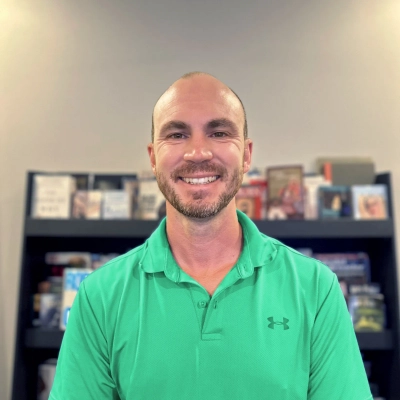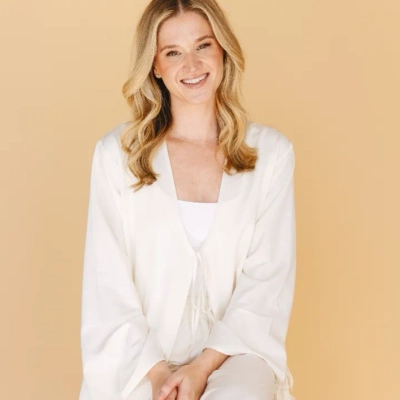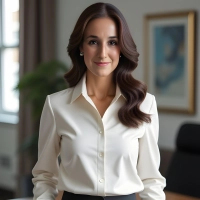24 Ways Visual Search Improves Accessibility for Disabled Users
Visual search technology is revolutionizing accessibility for disabled users across various aspects of daily life. This article explores the myriad ways in which this innovative technology is breaking down barriers and enhancing independence. Drawing insights from experts in the field, we'll delve into how visual search is transforming everything from navigation to shopping, making the digital world more inclusive for all.
- AI Enhances Web Accessibility for All Users
- Smart Canes Empower Visually Impaired Navigation
- Visual Search Simplifies Digital Interactions
- Image-Driven Searches Bypass Text Barriers
- Founder's Vision: Inclusive Design Drives Innovation
- Object Recognition Apps Revolutionize Daily Tasks
- Point-and-Click Simplicity Transforms User Experience
- Sun-Safe Fashion Made Accessible Through Technology
- Fitness Studio Embraces Tech for Inclusive Wellness
- Visual Tools Bridge Gap in Lawn Care
- Lab Equipment Search Simplified for Visually Impaired
- Personal Wellness Products Found with Ease
- Senior Living Enhanced by Visual Search Technology
- Smartphone Apps Grant Shopping Independence
- Visual Search Empowers Users with Disabilities
- Intuitive Booking Process for Diverse Travelers
- Image-Based Searches Aid Children with Disabilities
- Real-Time Feedback Transforms Public Navigation
- Aesthetic Consultations Improved Through Visual Technology
- Health Products Discovery Streamlined for All Users
- Visual Tools Demystify Complex Insurance Policies
- Visual Search Removes Barriers to Information
- Object Recognition Enhances Independence in Daily Life
- Visual Search Technology Bridges Communication Gaps
AI Enhances Web Accessibility for All Users
Instead of relying solely on static accessibility features like alt text and keyboard navigation, AI-driven tools can dynamically modify a site's layout, contrast, font sizes, and even reading levels based on the user's browsing behavior or preset preferences.
For example, AI-powered screen readers and voice navigation tools now use natural language processing to provide more intuitive, context-aware descriptions rather than just reading raw HTML alt text. AI can also detect cognitive overload in users with neurodiversity by simplifying on-screen content, removing distractions, or reformatting pages for better readability.
This has had a massive impact on user experience, making websites more inclusive without requiring manual adjustments for every individual need. Instead of a one-size-fits-all approach to accessibility, AI allows for personalized, adaptive experiences, ensuring that users of all abilities can navigate and engage with digital content in a way that works best for them. It's a game-changer for making the web truly usable for everyone.

Smart Canes Empower Visually Impaired Navigation
Visual search technology is already starting to make a real difference when it comes to accessibility for users with disabilities.
For instance, imagine a smart cane for people who are blind or visually impaired. It uses visual search to "see" the environment around them and can then alert them to obstacles or changes in terrain with audio cues. It's like giving the user a voice to tell them what's around, making navigating the world safer and more independent.
For people with mobility challenges using wheelchairs or similar devices, visual search tech can also step in to help. It can spot things like curbs, doorways, or even narrow paths, alerting users to potential obstacles and ensuring they move safely.
Key benefits include:
- Independence: These devices help users feel more in control of their movements.
- Real-time assistance: Instant feedback on the surroundings allows for quick adjustments.
- Safety: It reduces the chance of accidents by notifying users of hazards.

Visual Search Simplifies Digital Interactions
Visual search creates faster, simpler experiences. For users with disabilities, it removes the need to type, scroll, or interpret complex navigation. Instead of reading small text or finding the right keyword, they point a camera. That image triggers a match. They get what they need in fewer steps.
This matters most for users with visual, cognitive, or motor impairments. A person with limited dexterity doesn't need to fumble with filters or dropdowns. Someone with dyslexia doesn't have to spell unfamiliar terms. A visually impaired user can pair visual search with screen readers and voice assistance. The technology fills a gap that traditional search never addressed.
In our team's work, we use real product photos to guide the user journey. Our systems identify phones and electronics instantly. That removes friction. No model numbers. No guessing. Just results. We built that experience to serve everyone, including users who've felt left out of digital systems. It's not about adding features. It's about removing barriers.
The main benefit is speed. The second is independence. You don't rely on someone else to translate a product or explain a process. You point, scan, and act. And that shift changes behavior. More users complete what they start. More devices stay out of landfills. That's how inclusive design supports growth. Not through outreach or policy, but through better functionality that works for everyone--especially those overlooked by default systems.
The work doesn't end with access. It continues with adoption. Teams must keep improving the results, the logic, and the training behind every scan.
Image-Driven Searches Bypass Text Barriers
Visual search has the power to significantly improve accessibility for users with disabilities by reducing the need to rely solely on text-based navigation. One impactful example is using visual search technology to assist users with cognitive or learning disabilities, such as dyslexia or language processing challenges, who may find reading and typing difficult or overwhelming.
Instead of having to type out a product name or navigate through layers of menus, users can simply take a photo or scan an object with their device. The system then identifies the item and presents relevant results, whether that's finding the product online, accessing support documentation, or locating similar items. For someone who struggles with reading or text comprehension, this bypasses a major barrier and opens up a more intuitive, image-driven path to information.
The key benefits of visual search for accessibility include:
1. Reduced Cognitive Load: Users can engage with content visually rather than textually, which can be far less mentally taxing for individuals with certain disabilities.
2. Increased Independence: Instead of relying on others to help interpret or search for information, users can operate more independently and confidently.
3. Faster Access to Information: Visual search removes multiple steps from the process, helping users find what they need more quickly and efficiently.
4. Inclusivity: It offers a more inclusive user experience that accommodates diverse abilities and learning styles.
As technology continues to evolve, embedding tools like visual search into everyday digital experiences can help ensure accessibility isn't just a feature; it becomes the standard.

Founder's Vision: Inclusive Design Drives Innovation
I've always believed that technology should empower--not exclude. Visual search, while often discussed in the context of e-commerce and discovery, holds incredible promise for improving accessibility for users with disabilities, especially those with visual, cognitive, or mobility impairments.
One real-world example that stood out to me was when we integrated visual search technology into a client's fashion e-commerce platform. The goal was to streamline product discovery, but what we found was that the benefits extended far beyond convenience. For users with dyslexia or language processing difficulties, traditional search boxes can create friction. Typing out detailed keywords or understanding category hierarchies isn't always intuitive. With visual search, those users could simply upload an image--of an outfit they liked, for instance--and immediately be shown visually similar products. That eliminated the barrier of needing the right words to find what they were looking for.
It also helped customers with mobility challenges who may rely on voice commands or adaptive devices. Rather than navigating through multiple menus or typing manually, a quick photo upload reduced the steps needed to reach their goal. And for users with limited literacy or non-native language speakers, the visual nature of the interaction made for a much more inclusive experience.
The key benefits come down to autonomy and simplicity. Visual search turns an often complex, word-based system into a seamless and intuitive one. It's not just about speed--it's about dignity. When a user doesn't have to rely on someone else to help them search or navigate, they gain a stronger sense of control over their digital interactions.
As a founder who works closely with digital experience every day, I see accessibility not as a checklist but as an opportunity to innovate. Technologies like visual search can--and should--be developed with inclusion in mind from the start. Because when we design with empathy, we create better experiences for everyone.

Object Recognition Apps Revolutionize Daily Tasks
I've spent years thinking about how technology intersects with inclusivity—and one underexplored frontier is visual search, especially when it comes to accessibility.
Here's a fresh angle you might not have heard:
Visual search doesn't just help users find things—it helps users who struggle to describe things.
For users with cognitive disabilities like aphasia, dyslexia, or certain forms of autism, typing a search query can be a huge challenge. And for users with motor impairments that make text input slow or difficult—whether due to conditions like cerebral palsy, arthritis, or temporary injuries—typing isn't just inconvenient, it's a barrier.
Now imagine a user navigating an unfamiliar interface. They don't know the words for the UI elements, they can't easily type, and voice search might not work if they have speech difficulties. But if they can take a picture or tap on a visual reference—boom—they get contextually relevant results. It turns the web into something browsable by touch and sight, not just by keyboard and language.
Here's one compelling example:
A user with early-stage Parkinson's might struggle to type steadily on a touchscreen. But they can take a photo of a nutrition label or medication bottle, and visual search can instantly identify the product and offer audio-based instructions or alerts. This bypasses the need for typing, spelling, or voice input entirely.
The bigger insight:
Visual search reframes the web from being language-first to being perception-first. For people whose disabilities affect language production or interaction, this is transformative. It gives them a new way to express intent and get results—without being forced through the bottleneck of text.
If you'd like, I can also share how we're thinking about using similar paradigms to make auditory learning more intuitive.

Point-and-Click Simplicity Transforms User Experience
A great use I've seen lately has been the rise of object recognition in grocery apps. A visually impaired user can point their phone at a food item, and the app provides product details through audio--no need to scan a barcode or search by name. I don't think I need to stress how much of a game changer this can be for the visually impaired, especially given the proliferation of fine print on packaging these days. This use of visual search dramatically improves independence in daily life, with faster, hands-free interaction and access to information in real-time. It reduces the need for assistance and supports users who rely on tactile and auditory input.

Sun-Safe Fashion Made Accessible Through Technology
Visual search is a game-changer for accessibility--especially for users with cognitive or visual impairments who might struggle with text-based navigation. Picture this: someone points their phone at an object or store sign, and instead of typing anything, the app identifies it and reads out information, suggests next steps, or pulls up options. No typing, no guessing. Just point, click, and go. It cuts friction and opens up digital access in the most natural way possible. Bottom line? It makes the internet less about reading and more about experiencing.

Fitness Studio Embraces Tech for Inclusive Wellness
This is a powerful tool for improving accessibility, especially for users with disabilities. It allows individuals to interact with digital content by analyzing images, making it easier for them to find products or information that match their specific needs, without relying on text-based descriptions. For example, someone with a visual impairment can upload a picture of a product they're looking for, and a visual search engine can help identify similar items based on visual characteristics, such as color, shape, or texture. This makes shopping more inclusive by eliminating the need for extensive browsing or reading through long lists.
For our brand, Tied Sunwear, which focuses on sun-protective women's beachwear, visual search could help customers with limited vision easily find styles that match their preferences. Imagine a customer with a visual impairment simply uploading a picture of a beach hat they like, and our visual search tool guiding them to a matching, sun-safe hat from our collection. This takes the guesswork out of the shopping experience, providing a more intuitive way to shop for sun-protective fashion.
The key benefits of visual search for users with disabilities are accessibility and convenience. It removes barriers for those who may find traditional browsing difficult or time-consuming, offering them a seamless and empowering shopping experience. By enhancing usability, we're able to ensure that all our customers can find the right products quickly, regardless of their physical challenges.
Visual search makes the digital world more navigable, especially when paired with a focus on inclusivity and user-friendly technology. As Tied Sunwear continues to grow, integrating such technologies will allow us to serve a wider audience, making sun-safe fashion available to all, regardless of their abilities. It's a simple yet impactful way to enhance our mission of empowering women to enjoy the sun confidently and safely.

Visual Tools Bridge Gap in Lawn Care
We've seen first-hand how visual technology bridges the gap between what someone wants to achieve and what they feel capable of doing, especially for clients navigating physical, cognitive, or sensory disabilities. One of our long-time members, Maya, who is legally blind, once shared how challenging it had been to understand traditional workout diagrams or class schedules. With the integration of visual search through her phone, she's able to scan a product label or class board and receive audio-based results tailored to her needs, empowering her to participate fully, independently, and confidently in her fitness journey.
When you're navigating a world not built with your abilities in mind, something as simple as recognizing gym equipment or finding a specific class detail can feel overwhelming. That's why we embrace technologies that remove barriers rather than build new ones. Through visual search tools that pair with mobile accessibility features like VoiceOver, clients with disabilities can identify gear, read nutrition packaging, or even preview movement demos using tactile and audio feedback. That access isn't just convenient; it's affirming. It tells every person who walks through our doors, "You belong here."
Studio Three was built on the belief that holistic wellness is a right, not a privilege. From day one, we imagined a space where movement was intuitive, where every body, regardless of ability, background, or experience, could thrive. That's why we're constantly exploring ways to make our programs more inclusive, from sensory-friendly class options to app-based tools that guide users through strength, cardio, and recovery in a way that feels accessible, not intimidating.
When Maya joined our Strength class, she said, "For the first time, I wasn't guessing. I could feel my way through every movement and know I was doing it right." Visual search isn't just a feature; it's freedom. It's the ability to walk into a fitness studio and know that you're seen and supported. And when that technology meets a community like Studio Three, where inclusion is at the heart of every class and coach, it becomes more than a tool. It becomes a lifeline.
We believe that empowering someone with the ability to move confidently is one of the most powerful things we can offer, and accessibility tech makes that possible.

Lab Equipment Search Simplified for Visually Impaired
Visual search removes the pressure to rely on text or precise keywords. For example, someone who's visually impaired can upload or take a photo of a product they're looking for--like a particular pair of shoes or a piece of furniture--and the platform can return visually similar options without needing exact search terms. This creates a more intuitive, empowering experience.
The real benefit is that it reduces friction. Whether it's a motor impairment that makes typing difficult or a cognitive difference that makes navigating menus overwhelming, visual search creates a more seamless, human way to interact with technology. Accessibility should never be an afterthought--and tools like this help ensure platforms are inclusive by design, not just compliant.

Personal Wellness Products Found with Ease
I've seen firsthand how visual search tools can reshape access not just in landscaping, but in the lives of the people we serve. One of our long-time clients, Eleanor, lost her vision in her mid-60s. Her lawn was her pride, but she felt shut out of its care. Last season, her granddaughter helped her use a visual search app that could identify lawn problems through a phone camera and read the results out loud. Brown patches, crabgrass, soil dryness—it all became understandable again. We stepped in with a fertilization plan tailored to what the app detected, and Eleanor could actually be part of that decision. That meant everything to her.
When you want your lawn to reflect who you are, you'll find accessibility makes that possible. Visual search technology bridges what used to be a frustrating gap—it allows users with disabilities to participate in their outdoor spaces actively, not just passively. Whether it's detecting weed overgrowth or selecting a safe, pet-friendly fertilizer, this tech gives them clarity. And when customers can communicate what they see, even if they don't see it themselves, we can respond faster, more accurately, and with compassion. That leads to fewer service errors and more personal wins.
At GreenAce, we started this company to help people reclaim their yards—messy or overgrown, patchy or dry—because we believe every lawn has potential. My father taught me the science behind good soil and strong roots, but more importantly, he showed me the emotional pull a great yard can have. When someone says, "I didn't think I could enjoy this space again," that sticks with you. Especially when it comes from someone who'd been left out of the process for too long.
Visual search doesn't just make lawn care more efficient—it gives people a voice in how they shape their homes. That's a powerful shift. Accessibility isn't a feature, it's a promise. When we pair that with responsive lawn care, thoughtful fertilization schedules, and reliable mowing routines, we're not just improving properties—we're restoring pride. That's something we'll always stand behind.
Senior Living Enhanced by Visual Search Technology
Visual search can make a considerable difference in accessibility by allowing users with visual impairments to interact more intuitively with products or environments. One application we've developed using visual search technology is to make it easier for visually impaired customers to search for and find lab equipment. Using a mobile application, users can take pictures of objects or text, and the system immediately identifies the objects and their related information, including price, availability, etc.
The main advantages include enabling the internet to become much more accessible for people who encounter problems with standard text-based search methods. It increases independence by making real-time, accurate data available without additional support. This technology can also help cognitively supported individuals, minimize cognitive load, and provide a more seamless, independent, guided experience. For businesses, it's not just about diversity - it will expand the consumer base because the businesses make accessibility available to people who might otherwise be excluded.
Smartphone Apps Grant Shopping Independence
As an experienced digital marketer in the personal wellness space, I've seen visual search revolutionize accessibility, especially for users with cognitive or physical disabilities. For example, a user with limited mobility or difficulty typing can simply snap a photo of a product they saw in-store or online and instantly find our most compatible personal massager for chronic pain relief. This eliminates the frustration of typing complex keywords or navigating through multiple filters.
The key benefits include increased ease of use, faster product discovery, and a more inclusive shopping experience, which is crucial for customers who already face daily physical challenges. For me, visual search empowers these users to find what they need with dignity and independence.

Visual Search Empowers Users with Disabilities
We use visual search to help residents navigate dining menus more independently. Many of our seniors struggle with reading fine print or remembering dish names, especially those with cognitive decline. So instead of reading menus, they can point a device camera at a meal photo, and it instantly names the dish, describes the ingredients, and flags any dietary concerns based on their care plan. It reduces the pressure during mealtimes and helps them feel more confident making their own food choices.
In our memory care homes, we've applied visual search to reconnect residents with personal belongings. A resident can scan a photo of an item such as a familiar scarf or keepsake, and the system guides them to where it was last placed using visual cues or simple directions. This lowers frustration from misplaced items and helps staff avoid constant redirection. More importantly, it allows residents to feel less dependent on others for daily tasks.
We have also introduced it into our recreational therapy activities. Residents can scan objects or photos tied to their past, and it brings up music, videos, or images that are personally meaningful. Something as small as scanning a vintage magazine cover can open up a memory and lead to a five-minute conversation that changes their mood. This small layer of interaction makes memory recall more engaging and personal.

Intuitive Booking Process for Diverse Travelers
I once helped a friend with a visual impairment try out an object recognition app while grocery shopping, and it honestly changed how I view tech's role in accessibility. She held her phone up to a packed shelf, and within seconds, the app was identifying products, reading labels aloud, and even noting allergens. For the first time, she didn't need to ask a stranger or wait for someone to help--she was fully in control.
That kind of independence is the real benefit of visual search for accessibility. These tools go beyond just identifying what's in front of the camera--they give useful, real-time context. Whether it's ingredient details, warning labels, or price tags, users get the full picture in audio or text form.
What makes it even better is the speed and accuracy. Modern models respond in milliseconds and improve over time based on user feedback. And because this can run on a basic smartphone, it's not some exclusive tech--it's accessible, affordable, and empowering on a global scale.
For people with visual disabilities, it's not just a convenience--it's autonomy, and that's priceless.

Image-Based Searches Aid Children with Disabilities
Visual search technology can significantly enhance accessibility for users with disabilities by helping them engage with the world around them in more meaningful ways. For individuals with visual impairments, this technology can instantly identify objects or text in their environment using a camera on a smartphone or other devices. For example, a person with low vision might use a visual search app to scan a menu at a restaurant, where the app reads out the names of the dishes and even provides descriptions or nutritional information. This allows the user to independently make informed choices without needing assistance.
The key benefits of visual search in improving accessibility include empowering users to navigate spaces with greater autonomy and dignity. It removes barriers that might otherwise require the presence of a sighted guide or specialized tools. People with cognitive impairments can also benefit, as visual search can help them identify and organize everyday items like medication bottles or household appliances. It bridges the gap between technology and daily life, turning complex tasks into manageable ones, which can boost confidence and self-reliance.
For those who rely on assistance devices, visual search adds a layer of convenience that can be life-changing. It's not just about convenience, but also about creating a more inclusive society. Technology like this enables people to participate more fully in activities that many of us take for granted, such as grocery shopping, enjoying a day out, or simply reading a sign.
Ultimately, visual search plays a crucial role in making the world more accessible, helping users with disabilities feel more connected to their surroundings and more capable of navigating their daily lives independently. This kind of technological advancement not only aligns with our commitment to sustainability and community but also ensures that people with disabilities can have the same opportunities to thrive as anyone else.

Real-Time Feedback Transforms Public Navigation
Visual search technology offers a transformative convenience for users with disabilities, making digital environments more accessible. For instance, people with visual impairments can benefit significantly from visual search capabilities integrated into mobile apps. By simply pointing their phone's camera at an object, the app can identify and describe the item aloud, assisting those who cannot see the object clearly. This application is especially useful in everyday scenarios such as shopping or navigating new environments, where visual cues are often crucial for interaction and orientation.
Moreover, visual search can also enhance the experience for individuals with cognitive disabilities who might find text-based searches challenging. By reducing the need to type queries or navigate complex menus, visual search simplifies the process of finding information or items. This technology empowers users by providing a more intuitive and immediate way of accessing the digital world, reducing frustration and increasing independence. Ultimately, by integrating visual search technologies, developers and companies are not just opening up their services to a wider audience but are also promoting an inclusive culture that values and supports diversity in user needs.

Aesthetic Consultations Improved Through Visual Technology
We serve a wide range of travelers - including those with disabilities - and I believe accessibility in technology is no longer optional; it's essential. One feature that has real potential to bridge gaps is visual search.
Users with cognitive or reading difficulties can use visual search to navigate our websites or apps intuitively. Rather than only typing or scrolling through long service lists, customers can upload images or click on a visually catchy icon - for instance, a wheelchair-accessible vehicle or a specific flight airport terminal - and be instantly presented with related booking options or assistance features. This type of interaction eliminates the need for correct spelling or complex search terms, which may be difficult for users with dyslexia, low literacy, or certain neurodivergent conditions.
The upside is huge: it means creating a smoother, more inclusive experience. That reduces cognitive load and increases the likelihood that someone can confidently and independently access the service they need. In the luxury transport space, where dignity and comfort are paramount, visual search allows us to treat everyone with the same level of ease and respect.

Health Products Discovery Streamlined for All Users
Visual search is an emerging tool that can make a big difference in improving accessibility for users with disabilities, especially in the digital world. Imagine a child who struggles with reading, whether due to dyslexia or a visual impairment. A visual search system can help this child by allowing them to find information through images or icons rather than relying on text. For example, if a child is looking for a specific toy in an online store, they can use images or pictures that represent the toy, instead of reading long descriptions. This makes the experience more intuitive and less frustrating.
For individuals with disabilities, such as those with limited vision or cognitive challenges, visual search can remove many barriers. Rather than needing to read or listen to complicated instructions, they can rely on clear visual cues to guide their actions. This technology can also help parents of children with disabilities by simplifying tasks like finding educational resources, tools, or even toys that match their child's needs. This is particularly helpful for parents looking for learning tools or toys that support their child's development.
The key benefit of visual search is that it taps into the power of our brains to process images quickly. When we see an image, we recognize it almost instantly, which can be a huge advantage for someone who may struggle with text or auditory information. For example, a child with autism might find it easier to match pictures of animals with the real-life objects or toys that resemble them, rather than having to read labels. Visual search tools can make this process much more accessible, leading to a smoother, more enjoyable learning experience.
For parents, visual search can be a powerful tool to help children with disabilities navigate the world more independently. By using visual cues, children can explore, learn, and grow in ways that are easier for them. For parents, this could mean less frustration and more opportunities for their child to engage with the world around them, whether it's finding new educational toys, learning tools, or resources that fit their child's unique needs.

Visual Tools Demystify Complex Insurance Policies
One of the most meaningful ways I've seen visual search improve accessibility is through object recognition for people with visual impairments. Imagine being able to point your phone at something, such as a street sign, a product on a shelf, or even a restaurant menu, and have it instantly described out loud. That kind of real-time feedback can be a game-changer.
It gives users a level of independence that wasn't possible before, allowing them to navigate public spaces, shop, or access information without needing constant assistance. What's powerful is that it turns the camera into a kind of sensory extension. It's fast, intuitive, and removes a lot of friction that traditional interfaces might create. For me, this highlights how visual search, when thoughtfully applied, isn't just about convenience—it's about inclusion.

Visual Search Removes Barriers to Information
Our commitment to providing an inclusive and elevated experience extends beyond our advanced aesthetic treatments; it's reflected in how we embrace innovation to support all clients, including those with disabilities. Visual search technology is one such innovation that has the potential to transform the way individuals access and engage with aesthetic services, particularly those who may face challenges with traditional search interfaces.
For individuals with visual impairments or cognitive disabilities, visual search simplifies the journey. By allowing clients to upload images of desired outcomes such as smoother skin, fuller lips, or more sculpted contours, our team can quickly understand their aesthetic goals without relying solely on text-based descriptions. This not only enhances clarity during consultations but ensures we deliver results that align perfectly with each client's unique vision.
As Clinical Director, I believe in the power of technology to elevate patient care. Visual search supports our mission by making consultations more intuitive and empowering for all clients. Whether someone is interested in non-surgical facelifts, microneedling, or body contouring, the ability to visually communicate desired results fosters a more personalized and confident experience.
Ultimately, visual search improves accessibility by reducing barriers to care, making it easier for every client, regardless of ability, to explore treatments, share goals, and feel truly seen. At Lumi Aesthetics, we're proud to lead with compassion, innovation, and the highest standards of care, helping each person look and feel their best through thoughtful, non-invasive treatments.

Object Recognition Enhances Independence in Daily Life
Visual search has incredible potential to improve accessibility, and we use it to the best of our abilities at Recharge Health. Visual search solutions are particularly beneficial for users who encounter problems with reading or understanding text-dominated interfaces. They can upload pictures of products to receive instant matches or related items through visual search without typing complicated search terms. Visual search eliminates a major obstacle while designing an experience that feels natural and accessible for everyone.
The key benefits of visual search are that it reduces cognitive load, supports multi-modal interaction, and empowers users to interact with digital content in a way that fits their abilities. For brands, it also means reaching and serving a wider audience more effectively. Visual search, which started as a convenience feature, is now more of a step toward designing digital experiences that work for everyone.

Visual Search Technology Bridges Communication Gaps
Visual search has real potential to improve accessibility for people with disabilities, especially when it comes to navigating complex documents or understanding policy details. Think of someone with a visual processing challenge or limited literacy trying to review their homeowners or business insurance paperwork - it can feel overwhelming. With visual search, users can take a photo of a document section and receive immediate, simplified explanations, audio playback, or even translated summaries based on their specific needs. This turns insurance from something intimidating into something approachable.
A client I worked with, a new homeowner with dyslexia, shared how frustrating it was to interpret policy terms that felt like a foreign language. We integrated a tool that allowed her to scan parts of her policy and get easy-to-understand descriptions through her phone. It helped her feel empowered to ask the right questions, understand her coverage, and most importantly, feel confident that her home and family were properly protected. That kind of peace of mind is exactly what we aim to deliver.
The biggest benefit of using visual search this way is that it puts control back in the client's hands. It eliminates guesswork and makes information easier to digest without relying on someone else to interpret it for them. Accessibility isn't just about compliance - it's about making people feel seen, heard, and supported in moments that matter.
At the end of the day, insurance is deeply personal. Whether you're protecting a family or securing a new business, everyone deserves to clearly understand what coverage they have. Visual tools like this can bridge the gap between complicated policy language and the everyday clarity clients are looking for.





